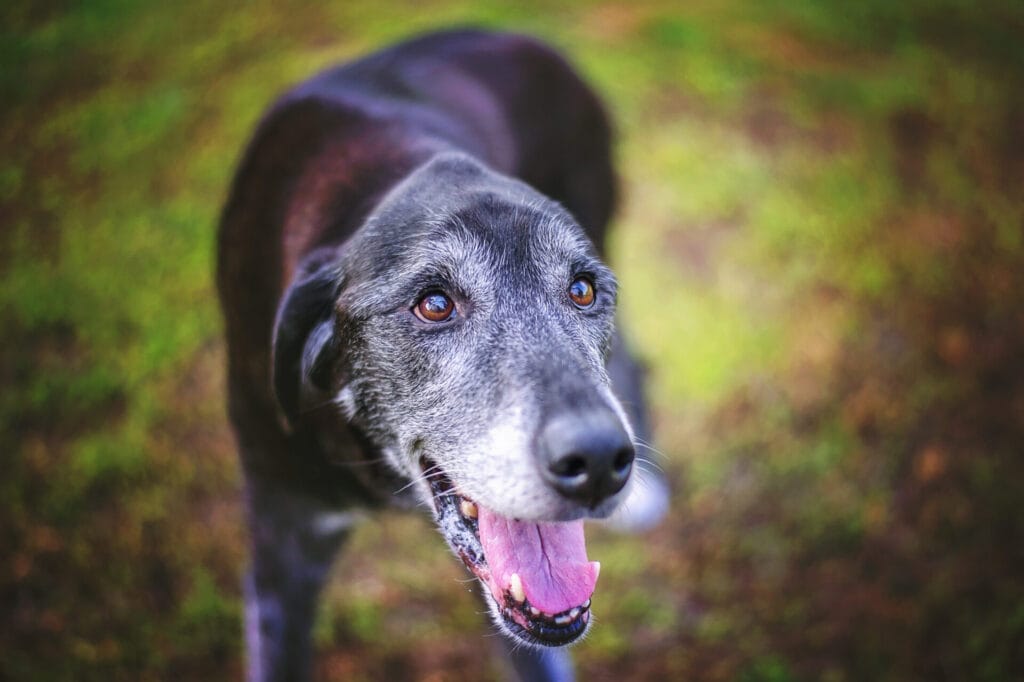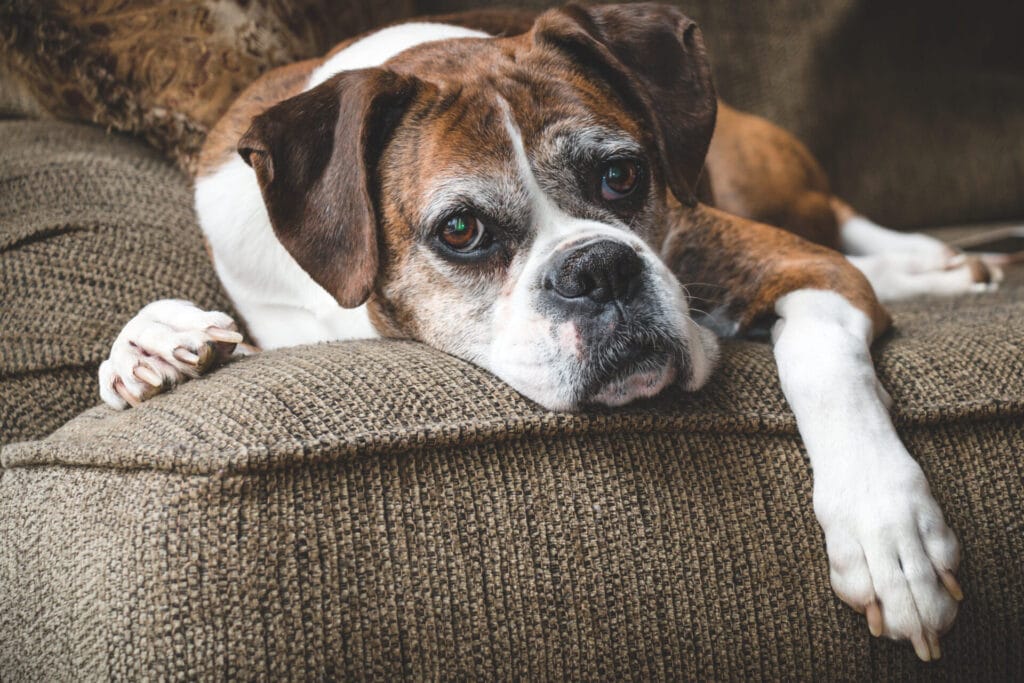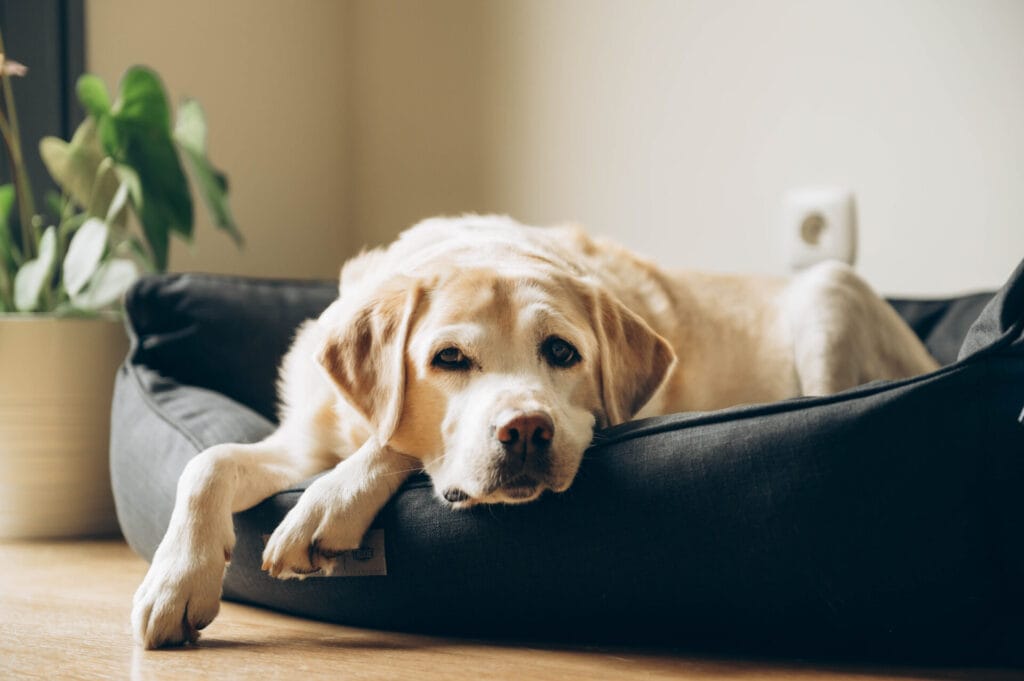As your dog grows older, it’s crucial to practice senior dog safety to ensure their home continues to be the safest, most secure environment. Whether there are physical, mental, or behavioral shifts, no dog is immune to the side effects of getting old. As owners, it is our job to ensure their homes are senior-friendly.

Vision Obstacles
As your dog ages, they will likely suffer from some degree of vision loss. The most common vision loss is cataracts, when the lens of the eye begins to cloud over. Even with extreme vision loss, like blindness, most dogs will adapt to the changes and use their other senses. Although dogs are resilient, there are many simple ways to assist your dog to ensure they encounter fewer hazards around their home.
Senior Dog Safety Tips: Vision Obstacles
- Help your dog navigate through the house at night by adding night lights to outlets along hallways or stairs.
- Although it is easier said than done, try to ensure you keep common areas clutter-free. Avoid leaving items in the middle of walkways. This helps your dog avoid potential injuries like tripping or running into things. According to the American Kennel Club, your dog will form a mental map of his surroundings. Your goal is to keep that map accurate.
- Do not change the placement of important items such as food/water bowls and dog beds. In addition, consider elevated feeding bowls to alleviate the strain on their neck and backs while eating and drinking.
Joints and Mobility
According to the RSPCA, four out of five dogs will experience arthritis as they age. This chronic pain in their joints can make moving around more difficult for them as time goes on. The surfaces your dog walks, sleeps, or even lounges on can impact the severity of pain they experience.
Senior Dog Safety Tips: Joints and Mobility
- Hard surfaces can be difficult for your dog to lay down and get up from. Try to provide your dog with alternative softer options in each living space for your dog to lay on. If possible, consider an orthopedic bed that will even further support your dog and provide joint relief while they sleep. There are many options/sizes and price ranges to choose from. Here is a list of the 15 best beds for aging dogs rated by the Fluent Woof. If you prefer your dog to snuggle with you in your bed, look into purchasing a dog ramp or stairs (such as these from Chewy) to help them get in and out of bed or even onto the couch more easily and limit the amount of jumping.
- An easy way to avoid possible injuries is closing doors or adding gates to block off certain areas, such as stairs, when you’re away to limit the number of hazards your pup could stumble upon. This will create safe boundaries for your dog without having to change the environment they are accustomed to.
- If you have hardwood or tile flooring, your dog may struggle to grip the slippery floor. Adding more rugs to high-traffic areas is an easy aid! Another option would be to try out Dr. Buzby’s ToeGrips– “ToeGrips help dogs move with confidence by providing extra traction and improving the brain’s perception of where the limbs and feet are positioned.”

As your dog ages, it’s important to keep their physical, mental, and behavioral changes in mind. Though it can be hard watching your pup begin to slow down, you can make the process easier on them and ultimately allow them to continue living a happy and stress-free life by creating a safer environment at home.

















